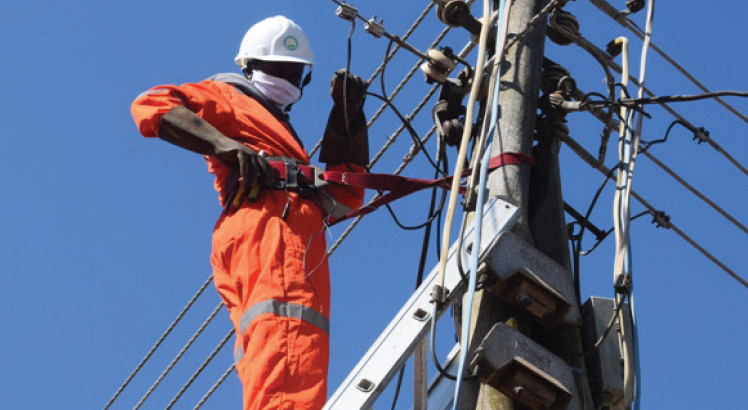Starving amid plenty
In this second part of urban poverty series, EPHRAIM NYONDO looks at the anatomy of food insecurity among the urban poor in relation to those in rural areas.
Mercy Mafunasi has just returned from Mbayani Market, Blantyre.

She has bought a kilogramme of maize flour, 100 millilitres of cooking oil, some usipa wrapped in an obsolete newspaper and a plastic bag containing some charcoal.
Her four children, an aunt and two other relatives visiting from Mulanje—their home village—are just idle on the khonde, visibly hungry and bored, waiting for Mufunasi to prepare them food.
Her husband, jobless but surviving on casual work, left her with K1 000 both for lunch and supper.
“I have to make sure that, whatever happens; we have food to eat—not once, but twice a day. Sometimes I supplement from my mandasi business and also from the little savings in village saving’s loan (VSL),” she tells me.
She prefers buying maize flour to maize, arguing it is cheaper. With our incomes, she says, it is a far-fetched dream to buy a bag of maize. Currently, the 50 kg bag of maize is fluctuating between K11 000 to K13 000. Even if we can manage a 20 Kg, she adds, you would still need more money for maize mill.
Without a piece to farm and extra money to hire land and farm, Mufunasi family entirely depends on the little her husband makes from his unreliable and unpredictable menial jobs. Mufunasi recalls several occasions where her husband could come home penniless. This means the family either going hungry or surviving on mangoes—just something to keep them going.
Using both local and international definitions, Mufunasi’s family fits perfectly in the league of households that are food insecure in Malawi.
They just do not just have enough food at their home; rather, even the little they have does not meet nutritional standards spelled out in the country National Nutrition Policy.
Interestingly, here in Mbayani informal settlements, there are many who share Mufunasi’s story.
Chancellor College-based researchers Peter Mvula and Asiyati Chiweza studied the scale of food security in Blantyre urban and established that chronic food insecurity is considered to be one of the most important challenges facing the people and government of Malawi.
This is contained in a 2013 study title ‘The State of Food Insecurity in Blantyre City, Malawi.’
Using three standard food security indicators, the study found that 34 percent of the sampled population are completely food secure, while the other 66 percent are generally food insecure but with varying levels of food insecurity.
What this study does is provide insights into the food security status in peri-urban areas of the country.
These areas are growing rapidly in number and extent as urbanisation, estimated at 14 percent, proceeds.
The study established that household dietary diversity is very low with most consuming a monotonous diet dominated by grain foods, especially maize.
The lack of income means poor access to other micronutrient-rich food groups, shows the study. Even worse, when maize prices rise, households immediately feel the pinch and levels of insecurity rise.
The main determinants of household food security in peri-urban areas include the type of household (with female-centred households being most food insecure), the sex of the household head, the size of the household, the income level of the household and the number of livelihood strategies pursued by the household.
More specifically, female centred households, households with large family sizes, households who have lost a breadwinner through death, households with a sick member and low-income households are more food insecure than the rest, reads the study.
Malawi’s renowened urban poverty researcher Liam John Riley, currently teaching at Canada’s University of Western Ontario, says many of Malawi’s food insecure population are living in urban areas, especially the informal housing areas, and for them the key challenge is how to access the food from the markets and supermarkets.
Some urban residents with little income are fortunate enough to have land for cultivation and the time and resources to produce food, he says.
For the majority, he adds, they are relying on the money they can earn through casual work and small informal businesses to buy food for their households.
Liam isolates five points that distinct between urban and rural food insecurity as experienced at the household scale.
One, in the urban areas, he says, food insecurity is a daily problem whereas in the rural areas it is a seasonal problem.
“Many food insecure urban households said that at least in the rural areas they have the harvest season when for part of the year they do not have to worry about food, whereas for food insecure urban households it is a daily experience to wake up thinking, ‘how can I find some money to buy food today’.”
Secondly, argues Liam, in urban areas, there is more choice so when you don’t have very much money you can go to an informal market where food is cheaper, or buy a kind of food that is less palatable but more affordable, or even negotiate with a vendor for a better price.
“In the rural areas there is less choice and if there is nothing there is nothing to buy. This shows that food supply is less of a problem in urban areas and rather people have to consider the difficulty of accessing food that they can afford to buy,” he says.
Three, further explains Liam, in the urban areas, casual work and informal business opportunities are more widely available as compared to the rural areas, where ganyu is usually available only on a seasonal basis.
“This means that in urban areas it is at least possible to find some money for food even if this is irregular and leads to an unstable kind of food consumption pattern with many lean days,” he says.
Fourth, adds Liam, in the urban areas, the household budget must be shared with other costs besides food, such as rent, water, utilities, and transportation, depending on the area where one lives.
“Many food insecure urban residents who had lived in the rural areas said that they were surprised to find how expensive life in town can be, and even though it seems like they are making more money than they were in the rural areas it is still not enough to buy all of the food they need,” he says.
Finally, on the issue of food prices, urban residents will find that since they rely on buying food they are very vulnerable to price fluctuations, explains Liam.
He says this can be a seasonal fluctuation or price increases related to global commodity prices or national economic policies.
“Rural households are also vulnerable to these broader economic changes, for example when global prices for fertiliser fluctuate because of economic policies or global economic changes,” he says.
With the rapid growth of the population in urban informal settlements in Malawi, says Liam, there is a need to further understand the phenomenon of urban food insecurity in order to develop policies to address the problem.
Mvula and Chiweza, of course, note that most attention tends to be given to the rural areas where the majority of the population live and where the prevalence of food insecurity is higher than in the urban areas.
However, they argue, Malawi is urbanising at a rapid rate and those who move to the cities do not automatically become food secure.
Urban food insecurity, they project and recommend, is likely to increase and therefore it is important for policymakers to begin to think about this issue.n





